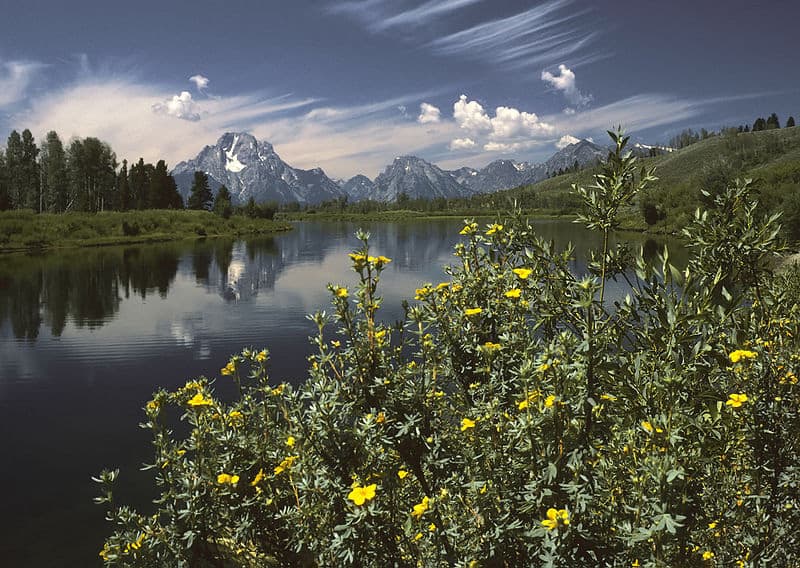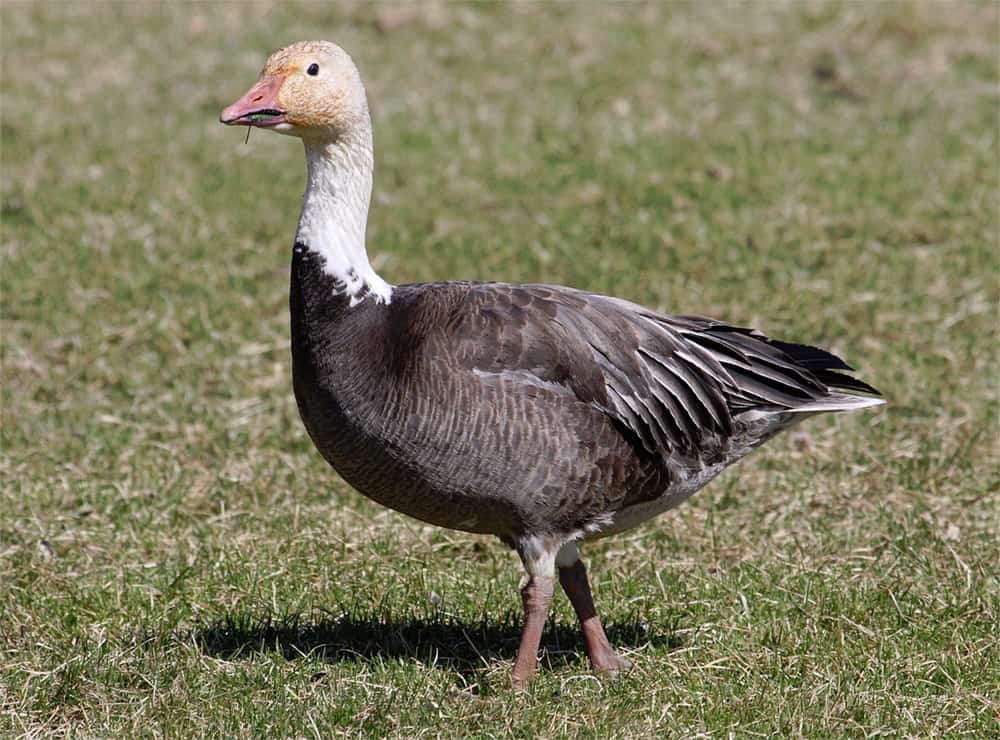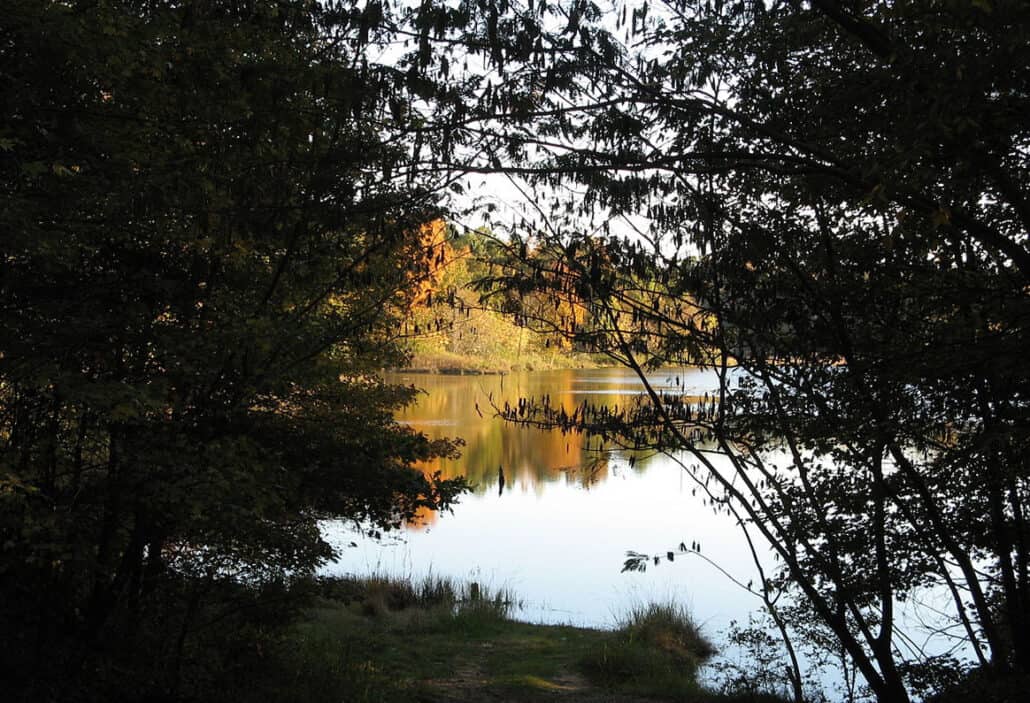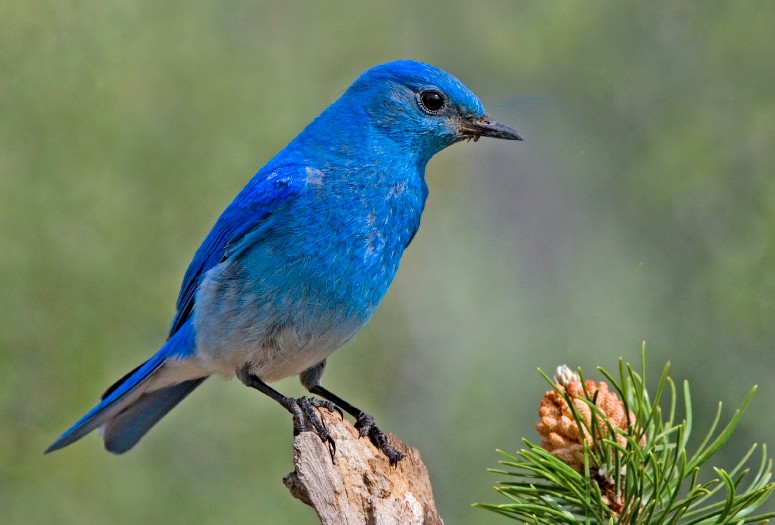A whole year and no vacation? Alas, true. I had just started a new job. The pay was great, but the benefits would be delayed. This sort of thing can strain a friendship—especially one that includes a lot of birding.
Fortunately, the July 4th weekend was only days away. Wednesday after work we left Chicago, flew to Salt Lake City and then to Idaho Falls. Monday we flew back. In between were four days of utter delight in Grand Teton National Park.
The Tetons are the mountains you think of when you think of mountains. High, rugged, and snowcapped, they leap from the flat valley floor of Jackson Hole without foothills or slope. About nine million years ago, the Tetons got on the geological Up elevator, and the valley got on Down, to go their separate ways. Then the Ice Ages got into the act. Glaciers gouged huge canyons into the mountains, at the same time whittling the peaks to horns. Glaciers leveled the floor of Jackson Hole, then retreated, leaving immense piles of the rubble that they had scraped off the mountains for trees and grass to cover, and for lakes to form behind.
The result is so beautiful that it never looks quite real. The birds like it, too. About 300 species, from whooping cranes to hummingbirds, have been seen in the Tetons or Jackson Hole. Trumpeter swans, bald eagles, and sandhill cranes nest here. On a good day you can see six kinds of swallows just by sitting down next to the Snake River, which flows from Yellowstone the length of Jackson Hole.
Habitat variety brings the birds and the tourists. River and lakes, sagebrush flats on the valley floor, low forests of pine and aspen, high forests of spruce and fir, mountain meadows, windswept alpine tundra above the timberline—even the ranches and towns have their own specific avifauna. As we drove through the city of Jackson, on our route back to Idaho Falls, magpies flashed up on all sides as if to see us off. Our first of the weekend—in fact, our first ever.
One advantage of being fairly inexperienced birders is that there are a lot of new birds to see. By going some place well outside our typical Midwestern range, we filled a weekend with so many firsts, so many dazzling wonders, that time never worried us. Well, hardly ever. For the first hour or so out of Idaho Falls, we were pushing hard: We wanted to be in the Tetons now. Then we paused at a turnout along Route 26, an overlook like a balcony seat on the broad gorge of the Snake. Above the river soared dark-headed Franklin’s gulls. Up the cliff face swooped violet-green swallows. In the treetops beneath us sang lazuli buntings and green-tailed towhees. All new, all wonderful. We agreed to relax.
And within two hours we had topped Teton Pass, gawked at the spectacle of Jackson Hole spread between the mountains like Shangri-La, eaten lunch, driven a rutted forest road carried on single-lane bridges over rushing streams, draped ourselves in binoculars, camera, packs, and hats, and started up Death Canyon Trail.
Death Canyon Trail is full of life. Sapsuckers, western tanagers, western and mountain bluebirds move through the trees and clearings. White-crowned sparrows and pine siskins call from all sides. Except straight up, there is no direction you can look and not see flowers. Summer starts late and goes fast here; there’s much to get done. And if there are dozens of insects busy in any cubic foot of air, the birds and flowers have uses for them.
Warned to give ourselves time to adjust to the altitude, we hiked about a mile that day and then turned back. Throughout the weekend, those 6,000 (at least) added feet were perceptible only if we tried to run, even across a parking lot. The mountains can take your breath away, in fact as well as figuratively. We had jogged every evening before the trip, and our legs were grateful; the trails do rise quickly. When we sat to rest before coming down, the hawks wheeling over Phelps Lake at the foot of the mountain were too far below us for identification.
The next day began with an easy identification: a fishing osprey. Behind our motel beside the Snake, the bird was having no luck. Four times it hurled itself claws-first into the river; four times it came up empty. At last it went looking for a better fishing hole.
We left, too, to drive along Jackson Lake, the park’s main body of water, and make the acquaintance of western grebes on the water and yellow-headed blackbirds in the parking lots. Between the lake and the road lies Willow Flats, a wetland paradise for ducks, moose, sandhill cranes, and yellow warblers. Late in the day, an easy walk brought us to smaller Christian Pond. Trumpeter swans were nesting there. As we came up, a female was pulling grass over her eggs. That done, she left the nest, stretched and refolded enormous wings, and glided through the reeds to open water. The male joined her moments later. We watched them until the long summer dusk was done.
This section of the park ranks among its best for wildlife, so we returned early the next day. We had caught a glimpse of big white birds on Oxbow Bend, a loop abandoned when the Snake changed course, and we were hopeful. What we didn’t expect were pelicans. A dozen or so, they took turns paddling gracefully about or sitting on a sandbar with three times that number of common mergansers. All those white feathers—as if snow had flown down from the mountains.
While we were distracted by a pair of mule deer stags that came trotting past, one of the pelicans took off and soared up to join an osprey over the water. This was apparently too much for the local raven. For the next five minutes it dived repeatedly at the two larger birds. The osprey eventually left. The pelican calmly circled higher and higher until the raven gave up.
That evening, we coursed the Snake on a rubber raft that holds ten passengers and a boatman at the steering oars. Sunset and dawn are the times for naturalist float trips, which last a couple of hours. The highlight for us was the bald eagles, especially the one standing on a small island mid-river, 20 feet away, at eye level. We stared; it stared. It won.
Last day. Try not to think about that. Drive to Jenny Lake, where a boat shuttles hikers to the park’s most popular trail. In Cascade Canyon, the glaciers had it all their own way. Down the giant groove that they cut spills Cascade Creek, placid in the main canyon but a foaming torrent the last steep half mile to the lake, including lovely Hidden Falls. The trail follows the creek, then springs up a cliff past the waterfall, pausing at clifftop Inspiration Point for a panorama of the creek, the lake, and Jackson Hole below. It’s a good place for lunch, as the Clark’s nutcrackers and yellow-bellied marmots know. While you eat, they move closer and closer.
When the canyon levels and opens, the trees grow thinner. The main mass of the Tetons looms a mile over you. The cliff has stopped the crowds. The creek runs smooth and quiet here. The wind drops. McGillivray’s warblers pipe a thin song. Broken eye rings make them look perpetually surprised.
But it’s time to go down. The last boat leaves at 6:00. All we want now is a dipper. We have read about dippers. We are in dipper country. Where, then, is the dipper?
Nowhere in sight, coming up. Nowhere in sight, going down. Disappointment turns to silliness. “Here, dipper! Come on, dipper!”
They are true, all those magazine stories in which the essential bird appears on the last day, at the last minute—true. Just above Hidden Falls, just before the crowds, up the crashing watercourse flies a dull gray bird. It lands, clinging to the slippery rock with outsize feet, then hops directly into the foam. Half a minute later it emerges and flies to a crevice amid the stones. It sheds water so well, even opening its wings produces no droplets. Another dip, another short flight, and then it is off downstream. And so are we.
We’ll be back. To visit Taggart Lake, where a forest fire has created a picnic ground for black-backed and three-toed woodpeckers. To watch sage grouse display by the Jackson Airport runway. To take the lift up to the mountaintops and look for rosy finches. But right now, we’re planning Labor Day. Point Reyes? Cape May? Who needs vacation, anyway?




